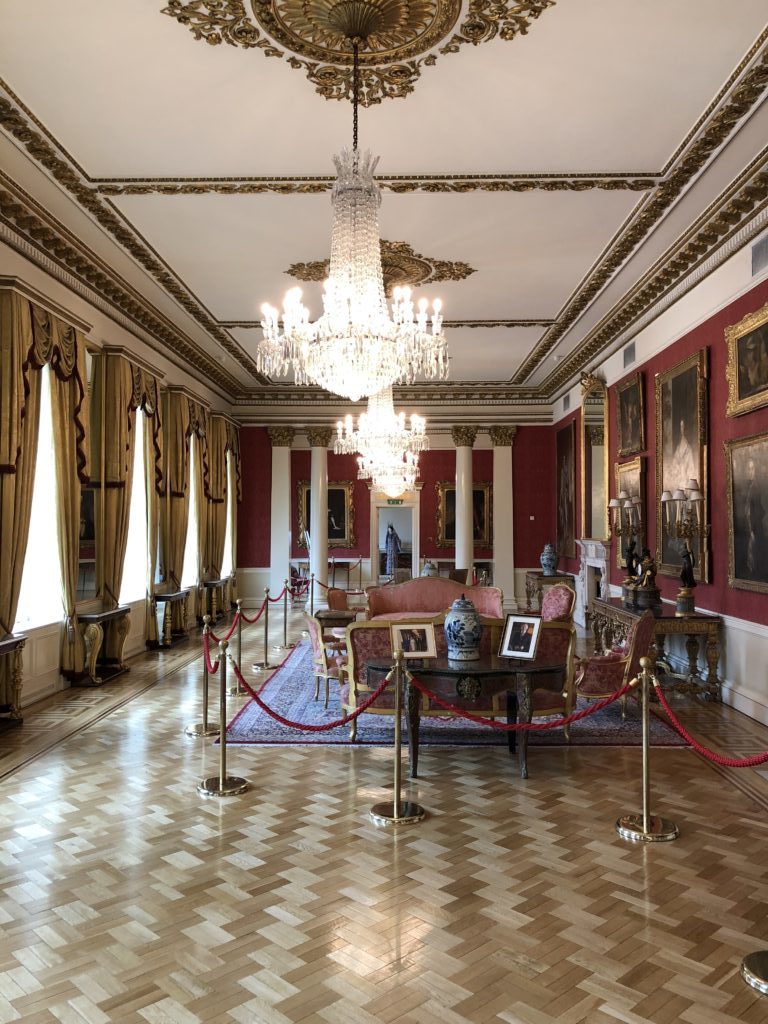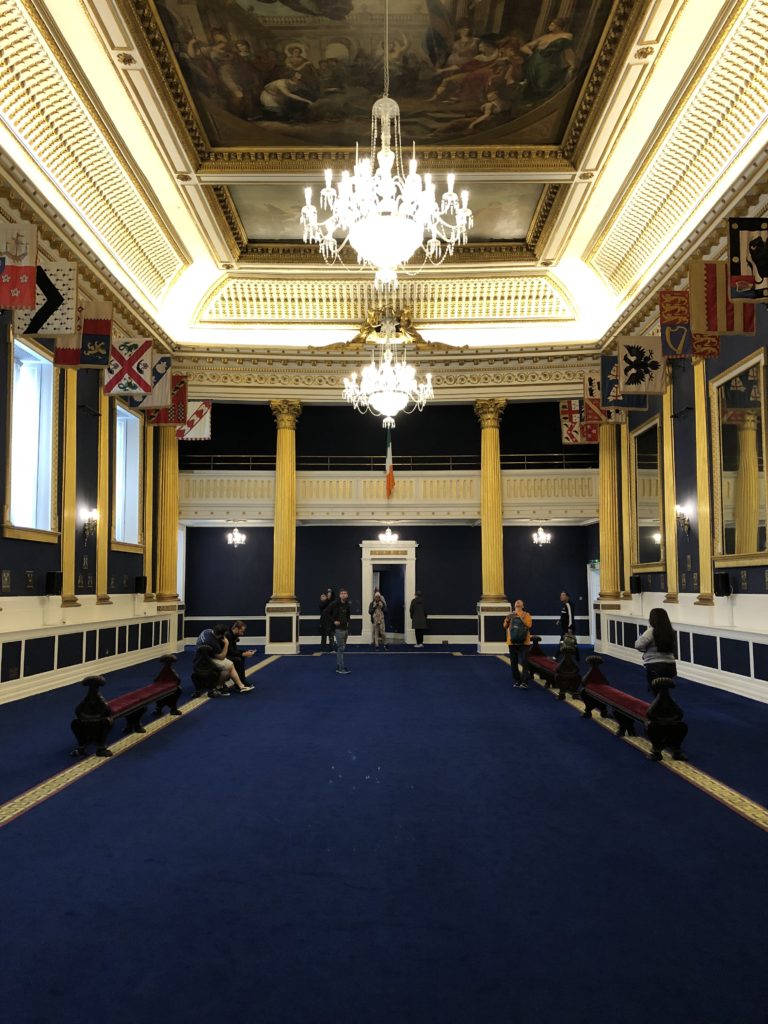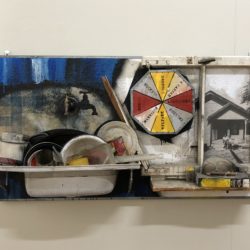
“You went to Dublin and didn’t visit the Guinness Storehouse?!”
“Not only did I visit neither the Guinness Storehouse nor the Jameson Distillery, but I managed to spend nearly a week in Dublin without drinking a drop of beer or whiskey.”
That’s usually a conversation stopper right there, but truth be told I tried to approach Dublin differently than just sticking to the (very well-worn) tourist trail. A few days before I left New York for the Irish capital, my dad asked if I was excited and I don’t think he got the answer he expected when I just sort of shrugged. I’m usually more at home in the likes of Honduras and Azerbaijan than Ireland, but I found a sweet deal on Aer Lingus that I couldn’t pass up. So much of Western Europe feels so crowded and overly-touristy, and yes I realize am a tourist myself, but it feels like you have to work overtime to find anything “authentic” when everything is laid out for you on an Epcot-themed silver platter.
To my surprise and delight, I absolutely adored Dublin. The people rocked, there was history everywhere and if you avoided the Temple Bar area (read: Epcot Central) it was easy to find lots of sights that made you wonder why you were one of the few people there.
Although I opted to bypass two of the biggest “must-see” attractions in the city, I did give into a few others. Here are my honest thoughts, as well as a few alternatives to visit instead.
The Book of Kells
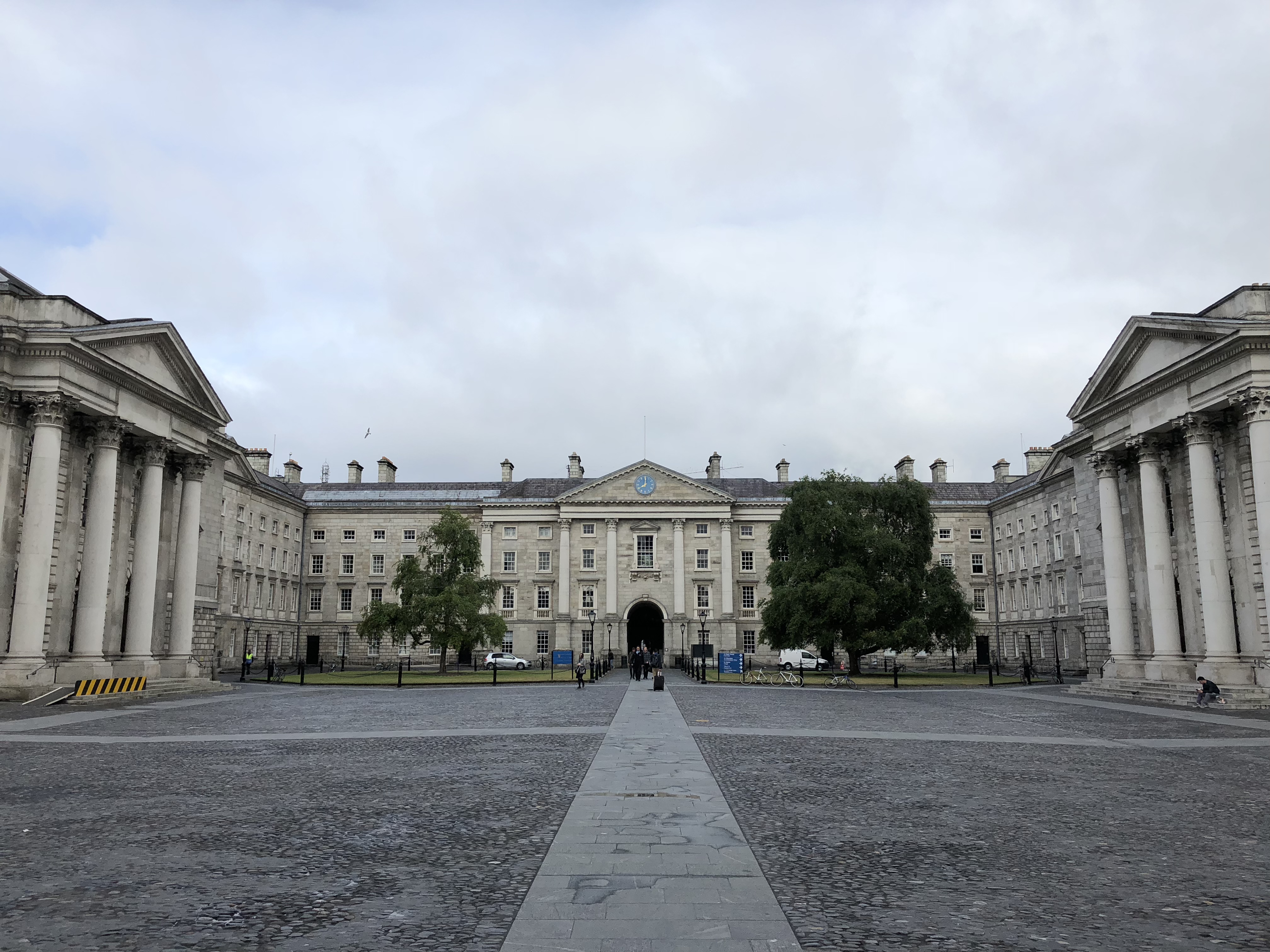
If the Guinness Storehouse is the most-visited sight in Dublin, The Book of Kells comes in a close second. Tickets are sold months in advance online and if you decide to wait to purchase on the spot, be prepared to queue up potentially for hours. I prepaid online and chose the earliest time slot available. Even with my pre-planning, I arrived to find 50 people already on line ahead of me.
What is The Book of Kells and why does everyone want to see it, other than that some guidebook told them to?
The Book of Kells is a copy of all four Gospels that was created by a group of monks around 800AD. The Gospels were written using intricate illuminated letters and colorful illustrations accompany the text. The pages are vellum and have held up remarkably well over the centuries. The book has been rebound into four volumes, only two of which are on display at any given time. The two display volumes are left open, under glass in a darkened room, so while this may be one of Ireland’s “greatest treasures,” you will only be able to view four pages of. It’s a lot of build up for about 45 seconds of pay off.
If there is a silver lining for putting in the time, energy and money to see The Book of Kells, it’s that you also gain admission to the accompanying library, with its intoxicating and overwhelming smell of old books.

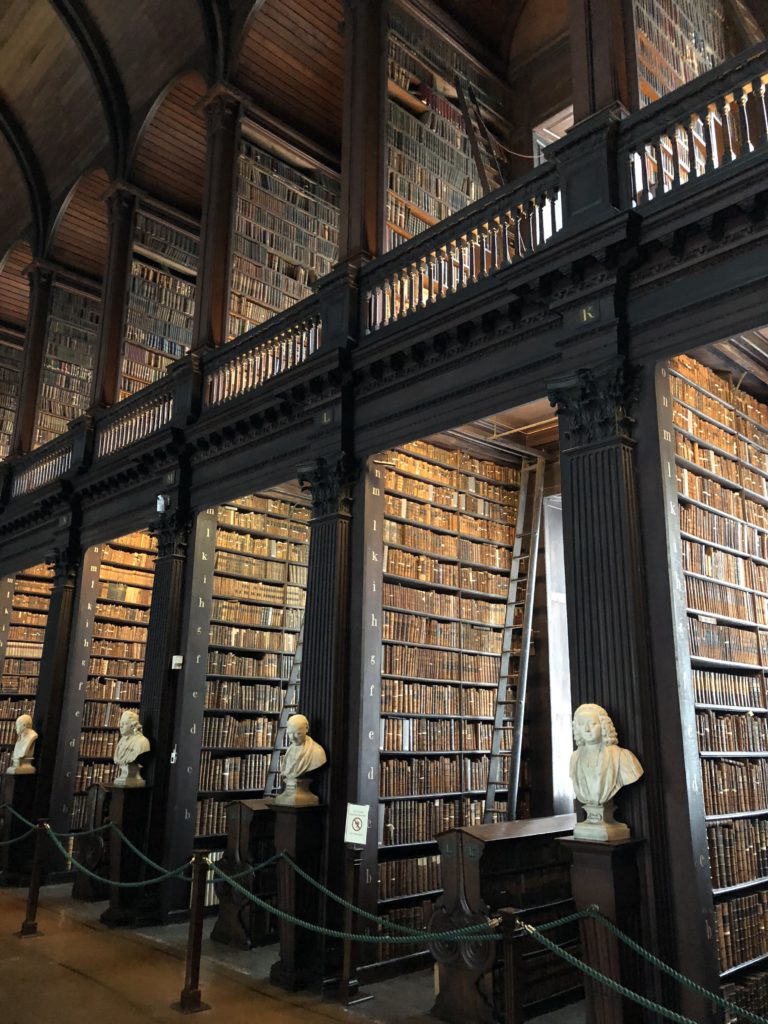
The library also houses the Brain Boru Harp, the oldest surviving harp in Ireland and model for the national symbol of Eire. But even with getting to experience the splendors of the library, there is a much better choice in Dublin if your passion is old manuscripts.

The Chester Beatty Library
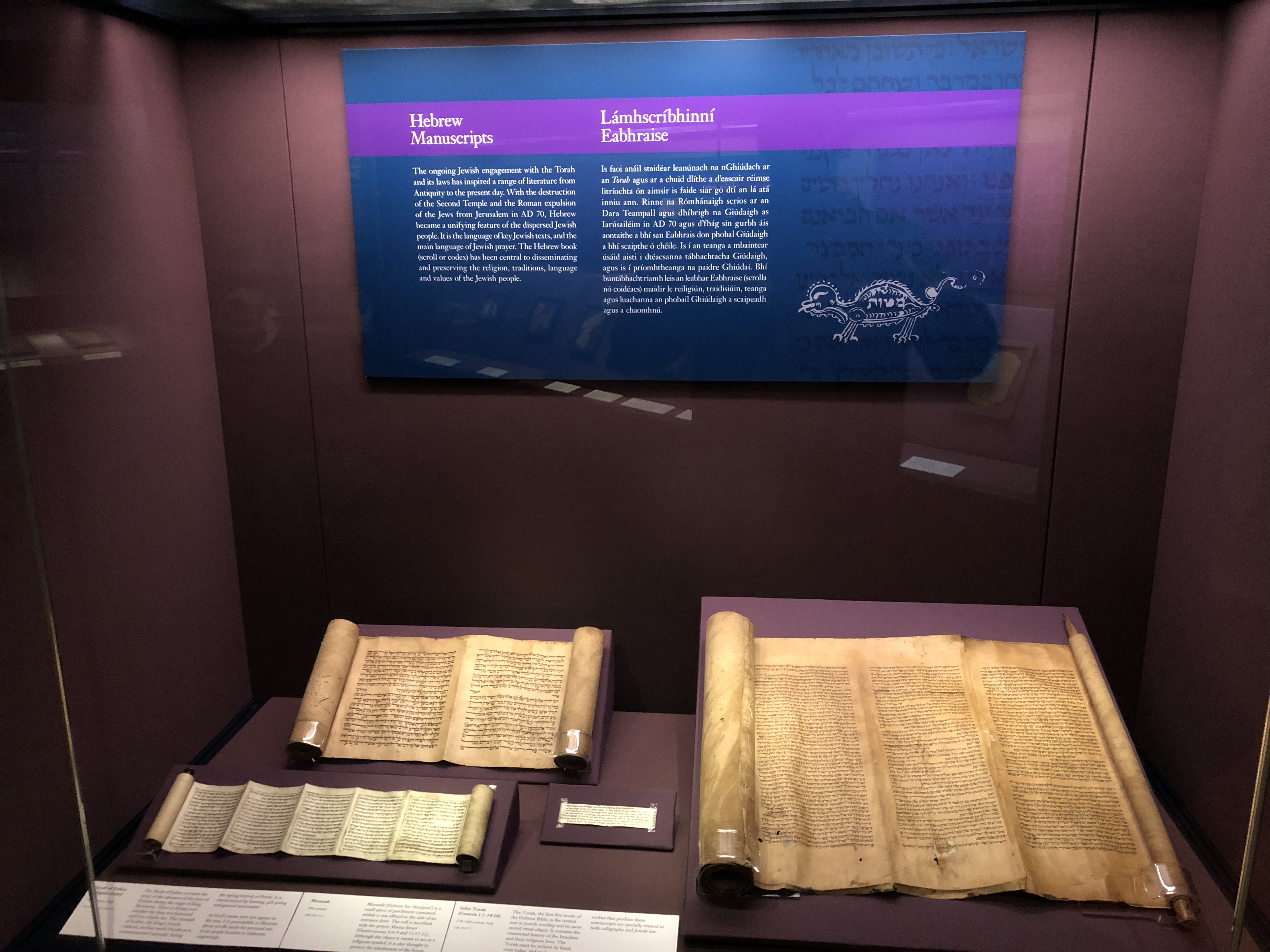
Chester Beatty was a native New Yorker who because a multi-millionaire in the first half of the 20th Century mining copper. He traveled extensively and collected rare religious texts throughout Europe, Asia and The Middle East. He also amassed paintings, sculptures and rare furniture, including Marie Antoinette’s bedroom set and exquisite Ming Dynasty vases. In 1950, Beatty moved to Ireland and obtained Irish citizenship. In 1954 he opened his home to the public with his collection on full display; upon his death he bequeathed the contents of his library to the Republic for all to see in perpetuity. Not only are the exhibits in the library/museum excellently curated and displayed, but admission is completely FREE.
The upper floors are primers on world religion, detailing the basic beliefs of all sub-sects of Buddhism, Hinduism, Islam, Judaism and Christianity. Traditional costumes, artwork and most importantly religious texts are thoughtfully labeled throughout. The numerous Qurans completely blew the four pages of The Book of Kells out of the water. I thought I might only be in the library for thirty minutes and ended up spending over two hours poring over Beatty’s collection.
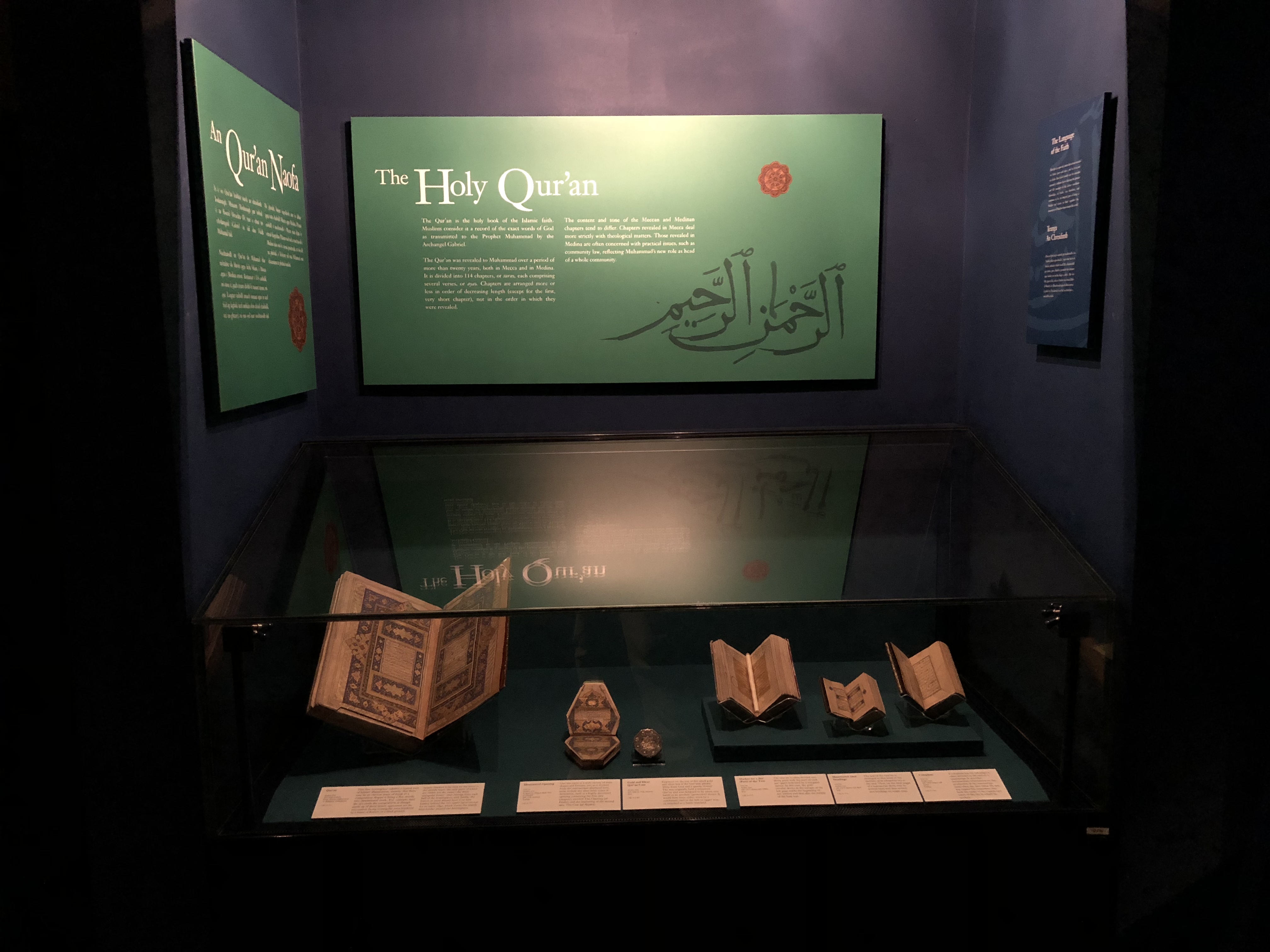
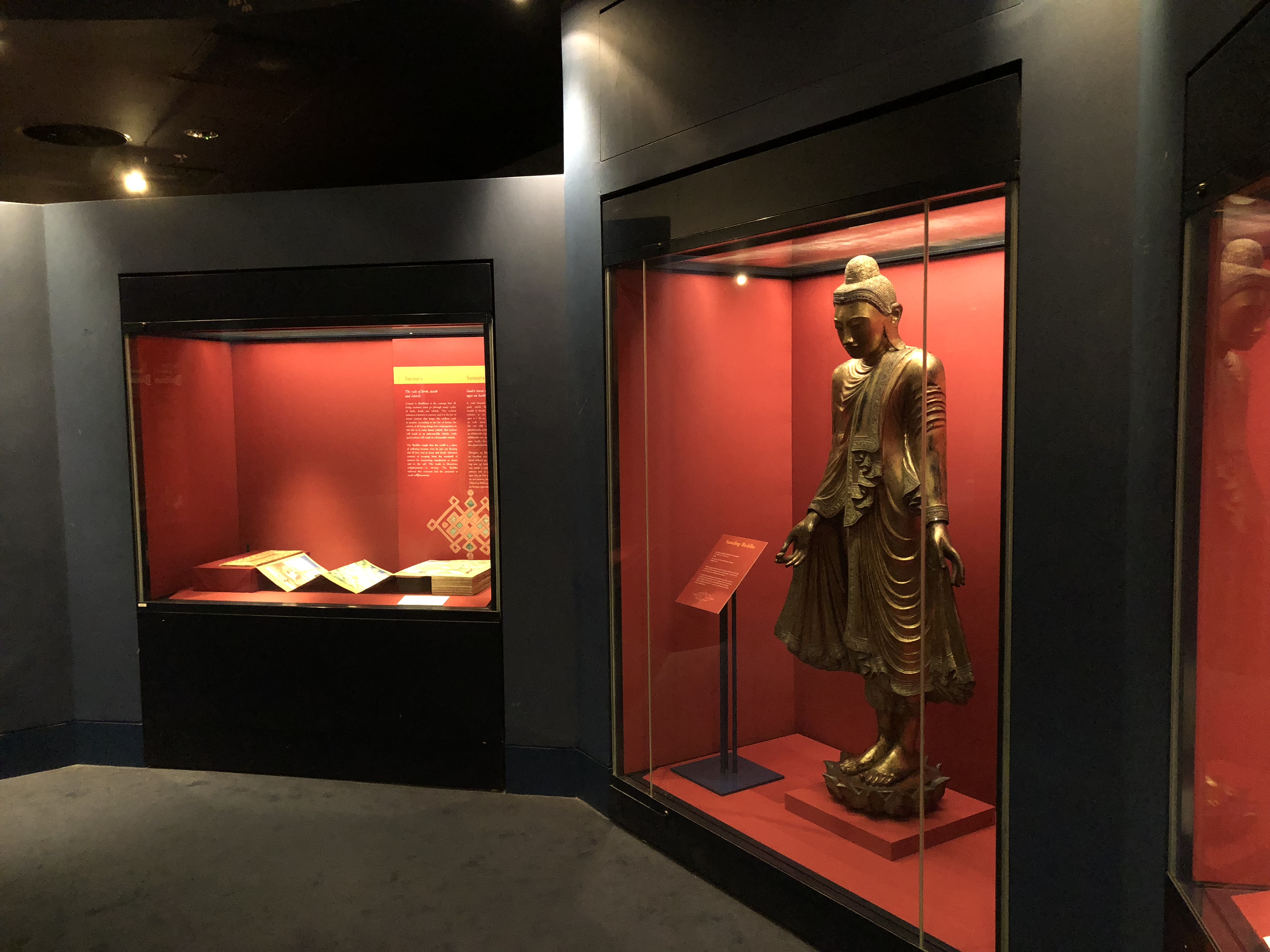
Rather than fighting the crowds to be pushed through The Book of Kells, take your time at the low-key library that impresses and then some.
Tour of Dublin Castle
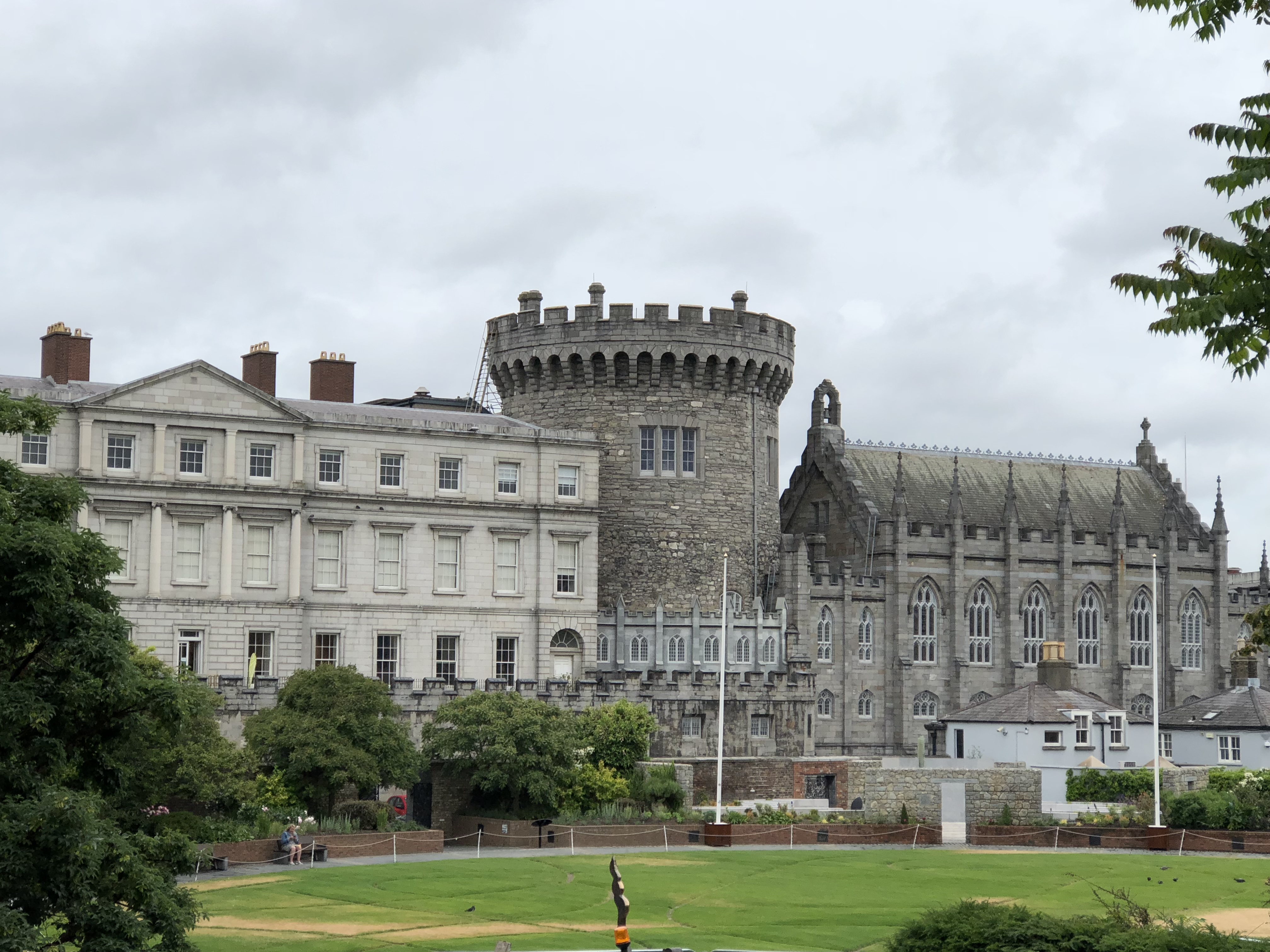
Dublin Castle is less of a medieval castle these days than a governmental administration center, but the cobbled together building is still impressive and worth a look around. The old royal apartments are open for self-guided tour, but in order to see the chapel, underground ruins and other parts of the ancient fortifications, the only option is to sign up for a guided tour. I decided to take the risk and pony up the extra money for the tour and I wish I had stuck with the self-guided option. Maybe it was just bad luck, but my guide was unenthusiastic and seemed to be hurrying us from place to place to get things over with. The royal apartments were easily the best part of the tour anyway, which I could have seen for half the price on my own. So the castle is a mixed bag- do visit, but skip the tour (you’re not missing anything by not seeing the chapel).
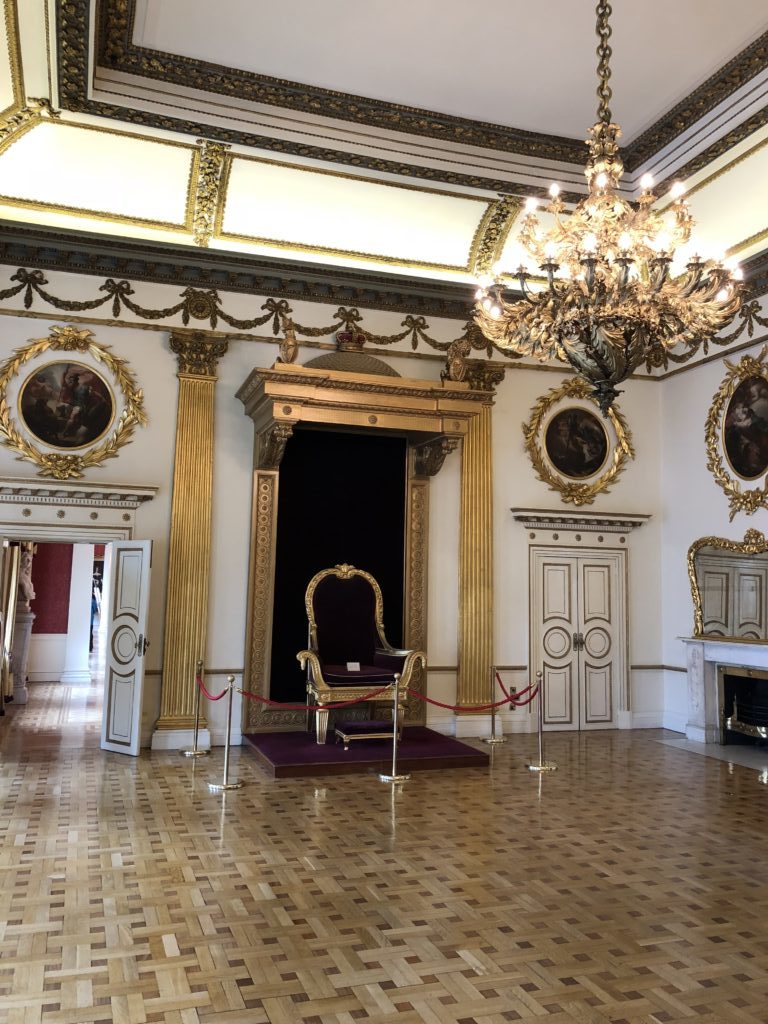
Tour of The Abbey Theatre
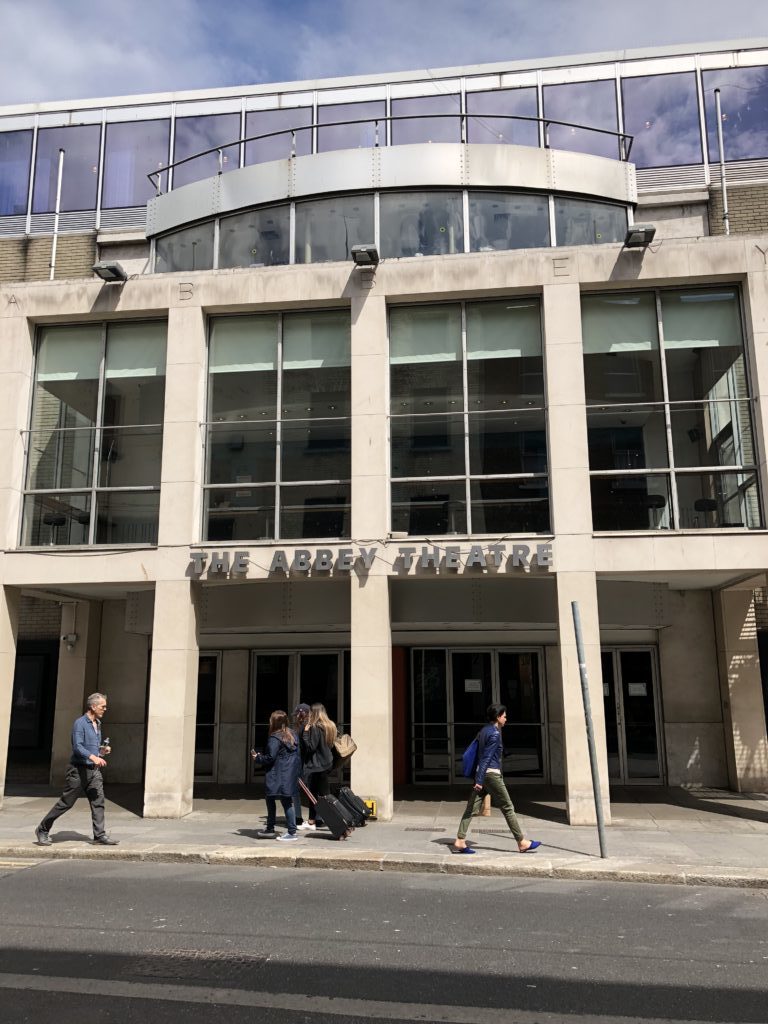
The Abbey Theatre may not be much to look at from the outside, but it has a rich history, having been founded in part by national poet, playwright and hero W.B. Yeats in 1904 in order to promote an Irish culture revival. The original Abbey Theatre burned down in 1951; the current building dates from 1966 and puts on both modern and classic Irish works.
Tour groups are kept small, so I would recommend booking at least a few days ahead of time online. Unlike the Dublin Castle tour, this one was completely worth it. I had an excellent guide who was very eager to share her love and passion of Irish theatrical history. The coolest thing about the tour is that you get to go both onstage and backstage and get a peek into the inter-workings of the current production. I happened to visit during a new production of Ulysses, which the theater had been reconfigured for. We were taken back to the costume and wig department and got to witness someone getting her hair styled.
This is the kind of cool, behind the scenes stuff that make taking a tour worth it. There was nothing I learned from the Dublin Castle tour that I couldn’t have read on Wikipedia or in my Lonely Planet guidebook. The factoids and experiences at The Abbey were unique and wholly engrossing.
National Museum- Archeology
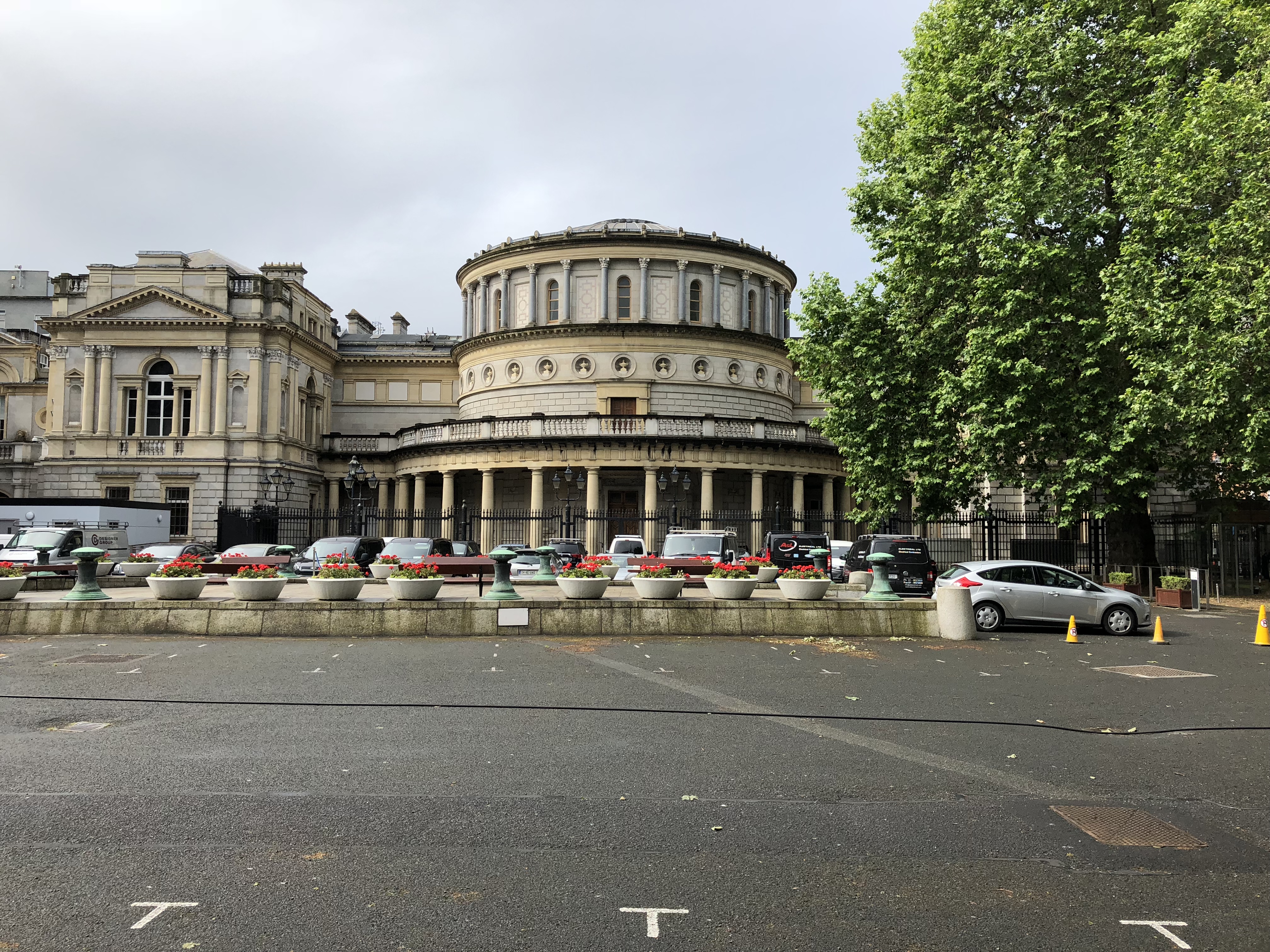
The National Museum of Ireland is divided into two many buildings: the centrally located Archeology branch and the somewhat outside-the-city-center Decorative Arts & History division. The Archeology department gets all the raves, but (with one exception) I found the exhibits dry and your fairly standard archeological museum fare.
If you do swing by, the one cool exhibit featured the “bog bodies” of Ireland- people who had likely been killed and placed in nearby bogs, which preserved their bodies for centuries in the natural elements.
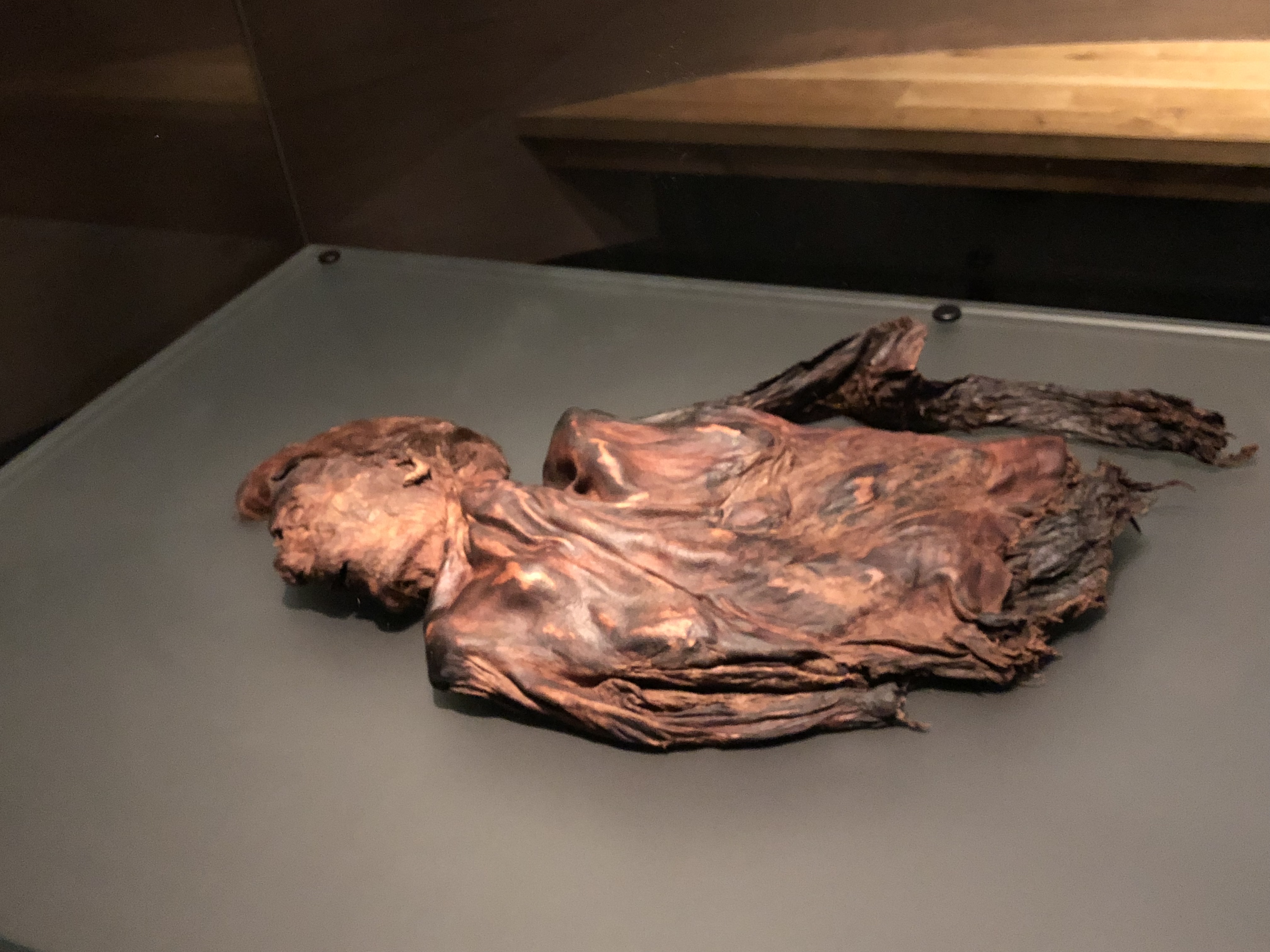
The rest of the museum is your stand bits of pottery and tools from the Stone Age, Bronze Age and Iron Age. This might make me sound ignorant to some, but a scrap of 2000 year old pottery looks exactly the same whether it was found in Ireland or Slovakia or Armenia or Nicaragua. Another fault I find with many of these ancient history museums is that they often fail to connect the historical artifacts with the present day cultural/political/geographic/economic landscape. History for the sake of history can be boring and nothing more than a list of facts- quickly forgotten five minutes later. When a museum takes the time to connect history to modern times the interest level rises significantly and the exhibits will retain their impact long after (e.g. Bosnia & Herzegovina was once controlled by the Ottoman Empire and here are the lasting effects still seen today).
National Museum- Decorative Arts & History
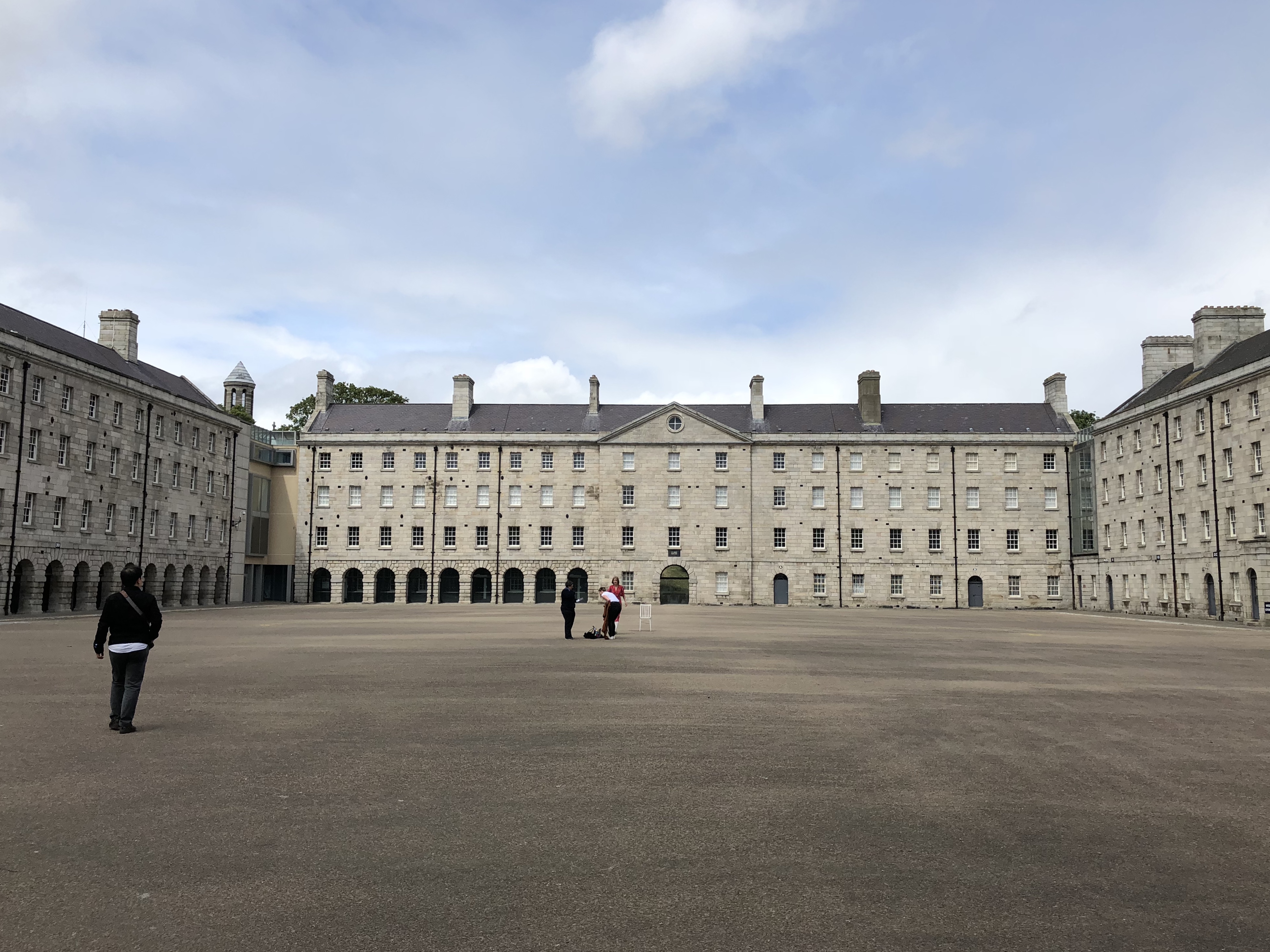
The National Museum- Decorative Arts & History is housed in the formers Collins Barracks, one of the oldest inhabited barracks in Europe. Built by the occupying British in 1701, this is where the bulk of British troops were deployed to squelch the 1916 Easter Rising, the definitive spark that led to Ireland’s independence. It might take a little more effort to trek out to this branch of the National Museum, but the exhibits were so much more informative and interesting.
The history section has an absolutely essential exhibit on the Easter Rising and subsequent fight for an Irish Republic. Even if you’re not a history buff, you will struggle in Dublin without a basic understanding of these events. All of the streets, statues, monuments and conversations seem to revolve around the heroes and happenings of the Rising and the current state of politics re: Ireland, Northern Ireland and the rest of the UK, all stem from these events. For an outsider, the political landscape is a bit of a jumble, but if you can get a few Dubliners talking about their views (not a hard task!) you’re in for an fascinating discussion.
Unlike the Archeological Division, the History Division clearly draws a line between the past and the present. This is what happened then, and this is how it is still affecting us today, is a common theme.
The decorative arts half of the museum chronicles Irish furniture making through the centuries, as well as showcases exhibits on glass blowing, rare coins and fashion. I lucked out and visited during a temporary retrospective on fashion designer Ib Jorgensen. Although Danish by birth, Jorgensen attended a fashion academy in Dublin and founded the Irish Haute Couture Group in 1962. He was one of the leading designers on the island for four decades and even designed several uniforms for Aer Lingus over the years.
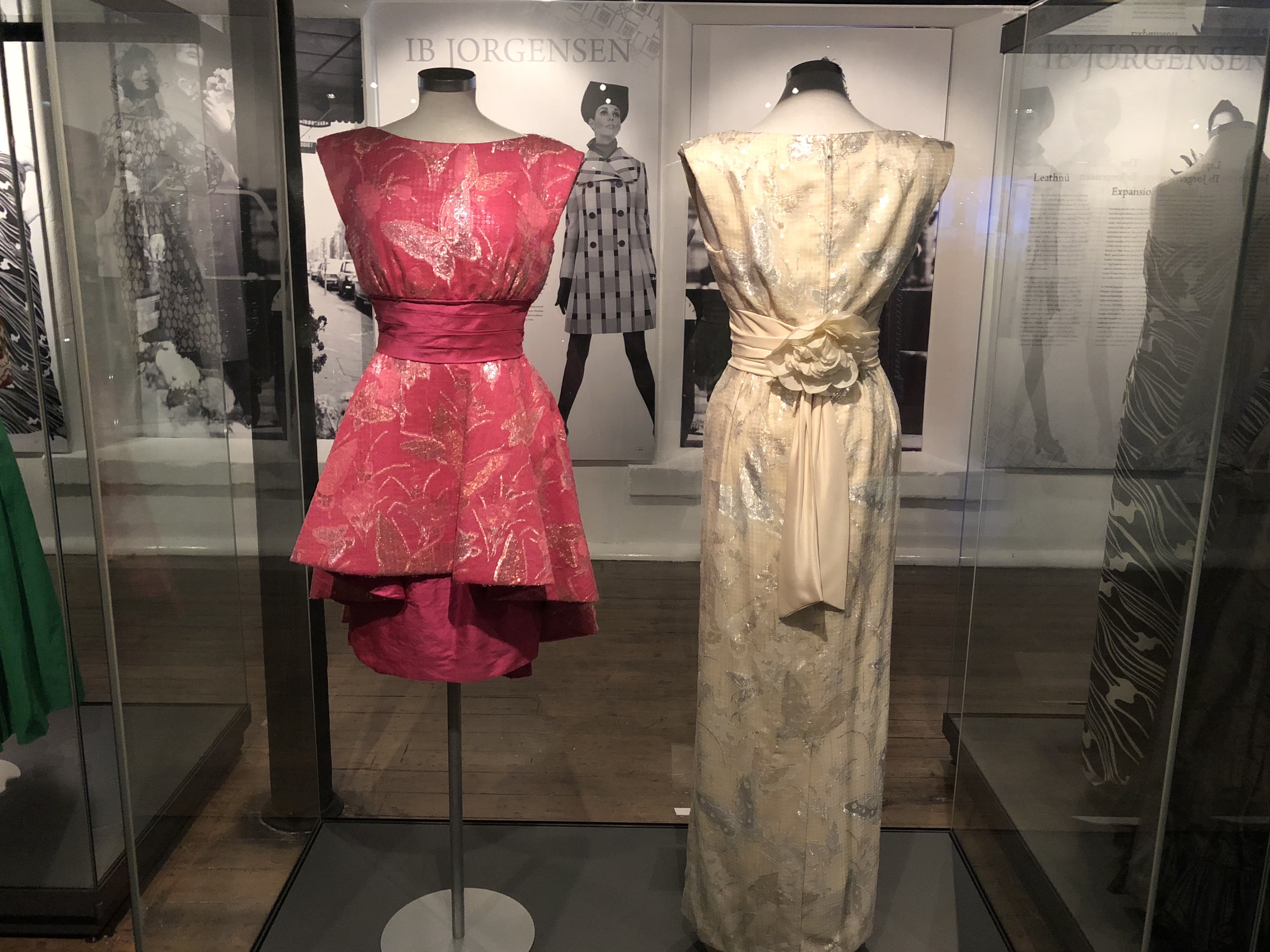
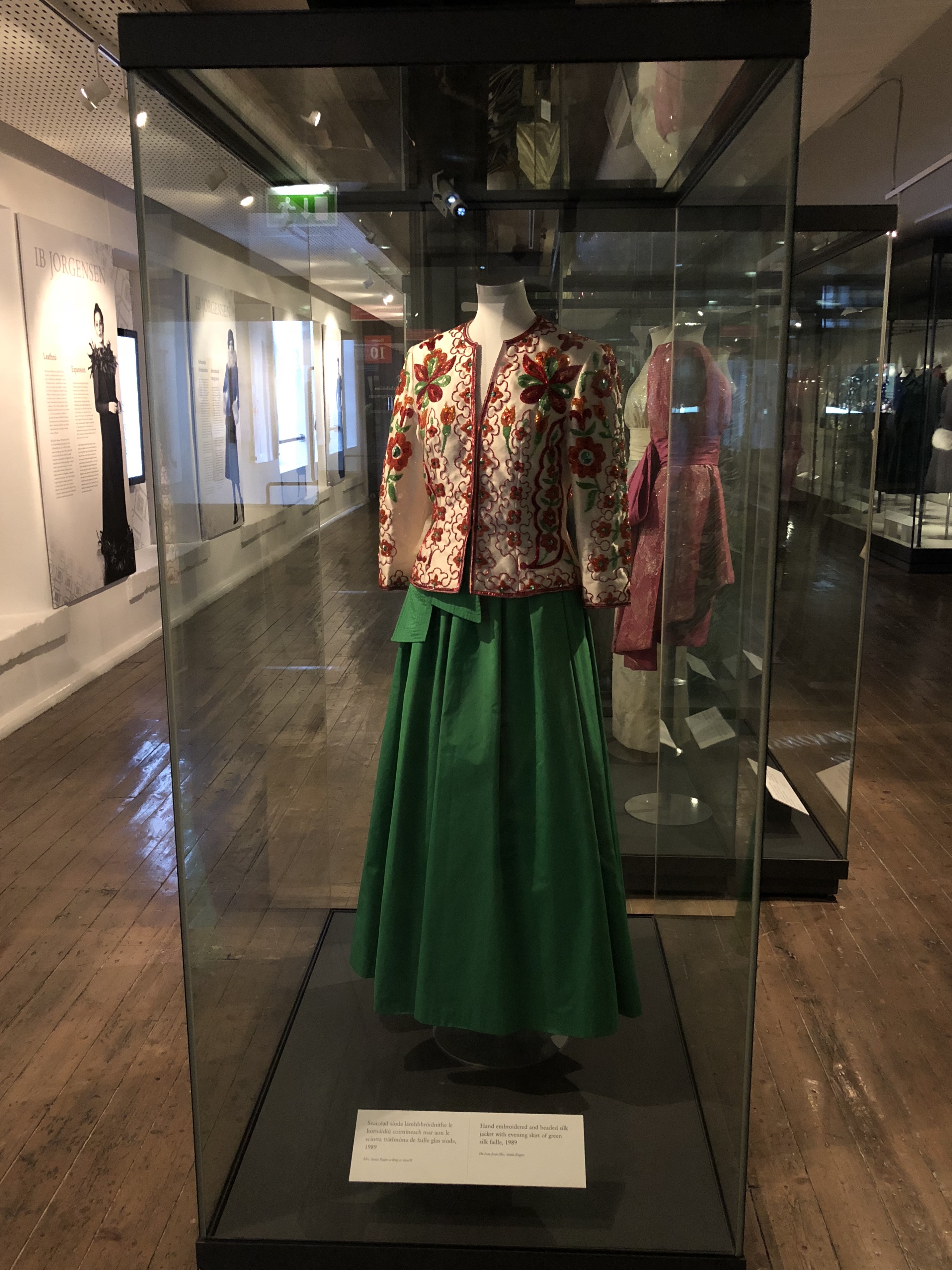
In conclusion, what you should really take away from this post is that just because a guidebook declares something a “must-see,” doesn’t me you actually must see it. Don’t be pressured into following in someone else’s footsteps. Do what interests you. Don’t travel to impress others. Don’t simply go down someone else’s checklist of “top sights” around the world. That means you’re traveling on another person’s terms when you should be traveling on your own. This is of course easier said than done. It does seem a little crazy to travel to Paris and not take a peek at the Eiffel Tower- at the very least don’t you want to know what the fuss is all about? I also know some independent travelers who can overreact in the opposite direction, downright refusing to see any popular sight, which is just as much of a mistake. Just because something is “off the beaten path” doesn’t mean it will always be awesome either. Do your research, take advice from locals and ultimately do what’s right for you.
